|
Getting your Trinity Audio player ready...
|
According to the Content Marketing Institute, 47% of the content, created by B2B marketers in 2018 was targeted at the early stage of the buying cycle. 87% of marketers told that the first reason for using content marketing is the lead generation or prospective customer search. On the contrary, 60% of the respondents cited they craft content purposed on persuading leads at the late stage of the funnel.
Financial KPIs Aren’t the Most Common Indicators of Content Success
The survey shows that financial metrics aren’t the most common indicators of content success for marketers. Bottom-line KPIs such as cost per lead (39%), increase in revenue (38%) and pipeline growth (37%) were used significantly less. On the contrary, the metrics such as the website traffic (67%), audience engagement (58%) and the number of leads (57%) were cited as the most commonly analyzed indicators.
Stages of Buyer’s Journey: Types of Content to Create for Each
The survey’s findings show that marketing specialists match different types of content to each stage of the buyer’s journey trying to nurture prospects toward a conversion, not to sell them right off the bat. Most marketers have concluded that the best practice is trying to give a persona the right types of information at the right times, instead of overwhelming people with pushy sales copy or ads.
Content at the awareness-stage should obviously have as much upfront value and as little sales pressure as possible. Blog-post is usually considered to be the most common type of content for the beginning of the buying cycle. However, the research states they can help convert and accelerate leads at the middle and late stages of the funnel as well.
73% of content marketers confirmed that blog-posting was the most effective at the awareness-stage, while 21% of them stated it was more powerful at the consideration-stage and only 6% of marketers told the blog posts had the impact at the decision-stage. Despite there is a little percentage of the last percentage, the research shows that case studies were the most spectacular at the late stage (40%).
The blog posts are effective at the awareness-stage if they have defining characteristics as follows:
- The text should be purely informative giving the answers and problem solutions
- It shouldn’t include the statements that sell or any brand acknowledgments
- The blog post should be easy to understand and able to resolve initial issues
- The text must be educational and showcase the expertise in your industry
Email Campaigns & Educational Content Are Reported to Be the Most Effective
Most content marketers say that email marketing campaigns and educational content are reliable ways to nurture relationships. Email (87%) and educational content (77%) are considered to be the top two methods of content distribution.
Content marketers are successfully building customer loyalty
96% of most successful B2B content marketers state their data show the audiences view their company as a trusted resource. 68% of all survey B2B marketers admitted they’ve used content marketing successfully to build customer loyalty.
Taking into consideration the data gathered from a survey of 192 respondents representing 25 countries, we can conclude that placing content marketing assets in destinations where target audiences can easily find and share information — is a critical component of successful B2B content marketing. Content marketing is a vital aspect of a marketing strategy that gives brands the opportunity to be associated with the trusted communities, become the industry influencer and build trustful long-term relationships with an audience.










